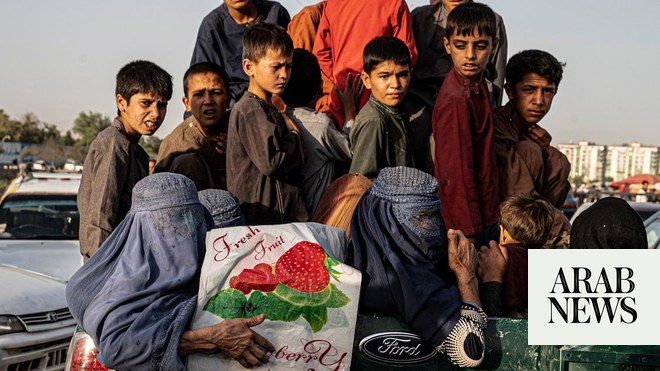
A harsh winter has adversely affected much of Afghanistan and led to drought.
A drought emergency task force has been set up by the Afghan government to coordinate and align the response across all sectors, including education, nutrition, water, sanitation and hygiene, food security and agriculture.
KABUL: A severe dry winter has affected 22 of Afghanistan’s 34 provinces, threatening the lives of 1 million Afghans, in addition to another 2 million who may feel its impact in the coming months as a hot summer approaches, UNICEF warned on Monday.
A lack of rain in late 2017 and early this year is leading to food insecurity and water scarcity that could worsen the already high malnutrition rates among children, UNICEF said in a statement.
Food insecurity and reduced access to safe water are beginning to take their toll on the 10 worst affected provinces where 20 to 30 percent of water sources are reportedly dry, the statement said.
“The impact on children could be devastating as these areas have pre-existing high rates of malnutrition. Without adequate nutritious food and safe water for drinking, as well as for hygiene and sanitation, children’s health will only worsen.”
“The extremely dry winter has affected 22 provinces in Afghanistan and now threatens to negatively impact the lives of one million people, with an additional 2 million who may feel its effects over the coming months,” it added.
The priority is to prevent the situation from deteriorating by responding to the needs of children and families in the worst affected areas, Adele Khodr, UNICEF representative in Afghanistan, said in the statement.
The organization said the impact of the drought could not have come at a worse time as cases of severe acute malnutrition — seasonal malnutrition — rise on average by about 25 percent each year in the summer months. Some 1.6 million children and 443,000 pregnant and lactating women suffer from malnutrition all over Afghanistan, notes the UN body.
A drought emergency task force has been set up by the Afghan government to coordinate and align the response across all sectors, including education, nutrition, water, sanitation and hygiene, food security and agriculture.
Cattle and other animals have perished by the hundreds as a result of drought which has forced some farmers from northern areas to send their cattle into central Asia for survival and grazing, according to residents.
President Ashraf Ghani recently ordered the country’s agriculture ministry to distribute forage to farmers.
Due to bad crops and a lack of access to clean drinking water, an estimated 100 families from the Bala Murghab district of Badghis province have been forced to move to Herat to find alternative work, UNICEF said.
“The situation is further complicated as a result of escalating conflict that often occurs at this time of year, leading to increased displacement and reduced access for humanitarian workers,” it said.
Among the affected provinces are Badghis, Bamyan, Daykundi, Ghor, Helmand, Kandahar, Jawzjan, Nangarhar, Nimroz, Nuristan, Takhar, and Uruzgan which are in a state of critical priority for nutrition and water, sanitation and hygiene assistance.
Thirteen provinces, out of the country’s total of 34, received less than 30 percent of their average annual rainfall in the period October 2017 to the end of February 2018.











